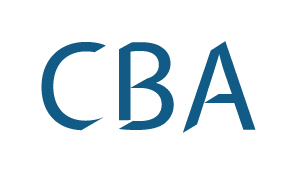Once again in 2014 employers who offer employee benefits face significant challenges. An aging workforce, rising use of new and more innovative drug therapies, as well as a more competitive labor market and economy are all pushing smart employers to think differently about their benefits plans. We see three major trends coming to the fore the 2014.
Wellness: it’s more than education it’s about behavior change
Wellness programs need to do more if they are going to live up to the hopes of most plan sponsors that adopt comprehensive corporate wellness plans. In that regard, the big challenge for most wellness programs is walking the talk.
The majority of wellness programs share one common trait - a fundamental operating premise that more information leads to behavior change. That’s led to the creation of countless websites and employee communication programs of all kinds. And yet the awful truth is that all this knowledge and all this information does not appear to be enough to lead people to make the lifestyle changes necessary to improve their health and well-being on a sustainable basis. And the truth is that wellness programs needs to be able to deliver wellness if they’re going to be judged as effective.
That’s not all that surprising when we realize that people are creatures of habit. Changing habits takes more than a poster or an information session. Changing habits involves creating a comprehensive system of rewards and incentives as well as providing support as part of the overall culture of the organization.
Wellness programs that adapt to this reality will prove to be very valuable investment for plan sponsors. Wellness programs that don’t are going to be viewed increasingly as investments variable returns.
Strategy comes to employee benefits
It’s no secret that the cost of employee benefit plans are major issues for most plan sponsors. With premium increases running in advance of revenue growth and profitability, plan sponsors need to look at things in not just a different but a better way. That’s where strategy comes in.
Smart plan sponsors are starting to take a strategic approach to employee benefit plans. Like any good strategic plan, the process starts with understanding the purpose or mission of a benefits plan. In addition, smart employers need an inventory of their operating environment, including an assessment of threats and opportunities that could impact the plan and the strengths and weaknesses of the current plan design to deal with these threats and weakness to give plan sponsors a solid base to develop a three to five-year plan to manage their investment in benefits as a strategic asset versus the seemingly ever increasing expense.
Read more:
Strategy comes to employee benefits
The Benefits Investment: Who pays? Who gets the benefit?
Today in Canada about a third of our healthcare costs are paid by the private sector largely through employer sponsored benefit plans. The share of public spending on healthcare services for Canadians has been flat if not declining for a number of years even though there are significant pressures increasing healthcare expenses.
Private sector employers are increasingly under pressure to reign in if not cut back benefits plans leading in some cases to reductions in coverage and forcing more of the cost on to employees. The long-term impact should be obvious to all. In an era when more effective but expensive biologic-based treatments are being made available to treat an ever increasing range of illnesses, questions about who should pay will increasingly find their way to C- level discussions in many organizations.
Read more:
Benefits investment

For more information visit
www.corpben.com.


